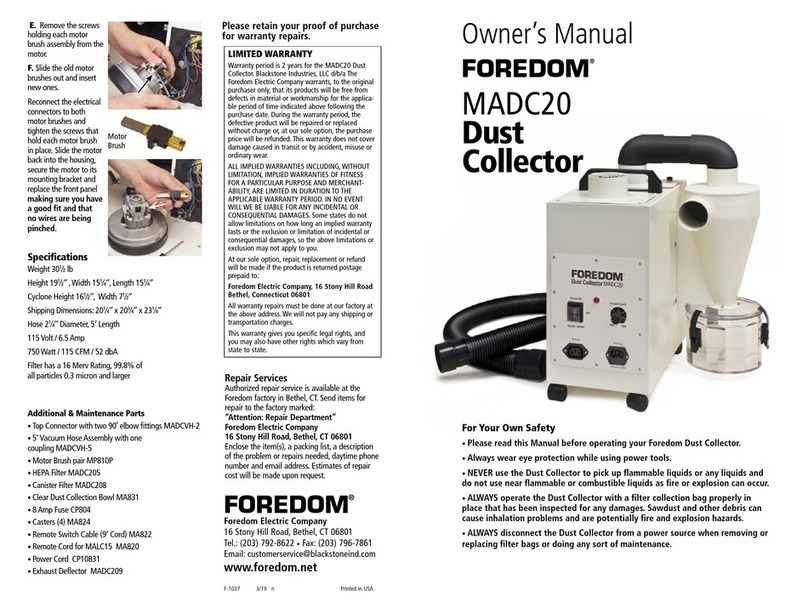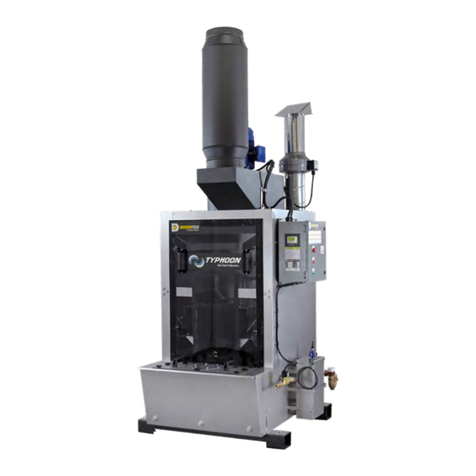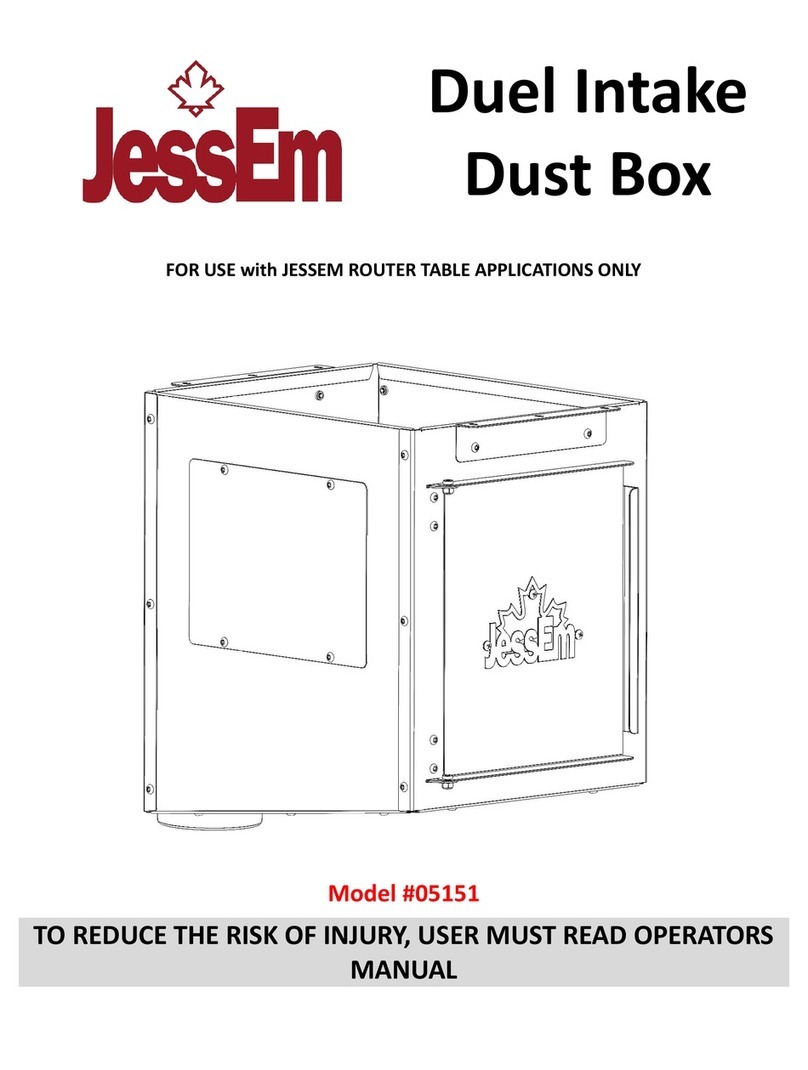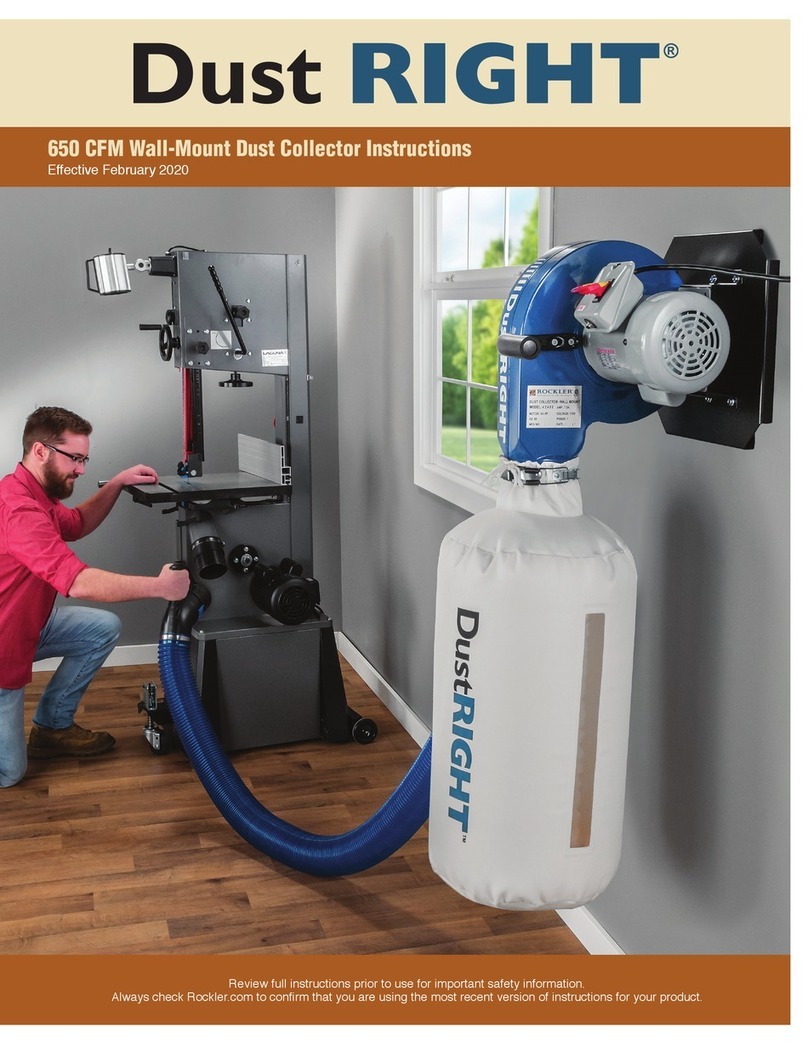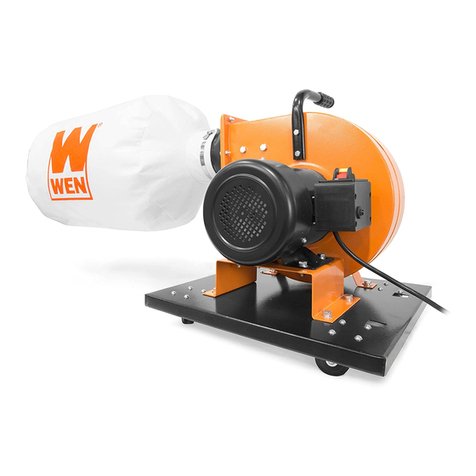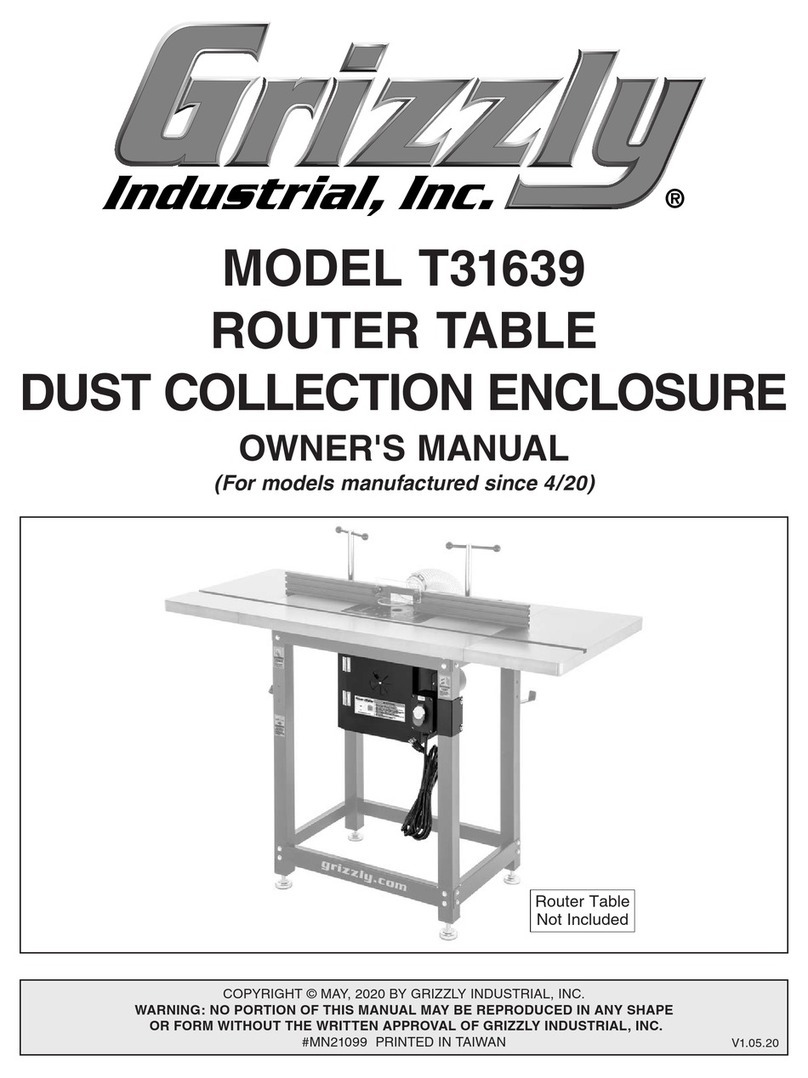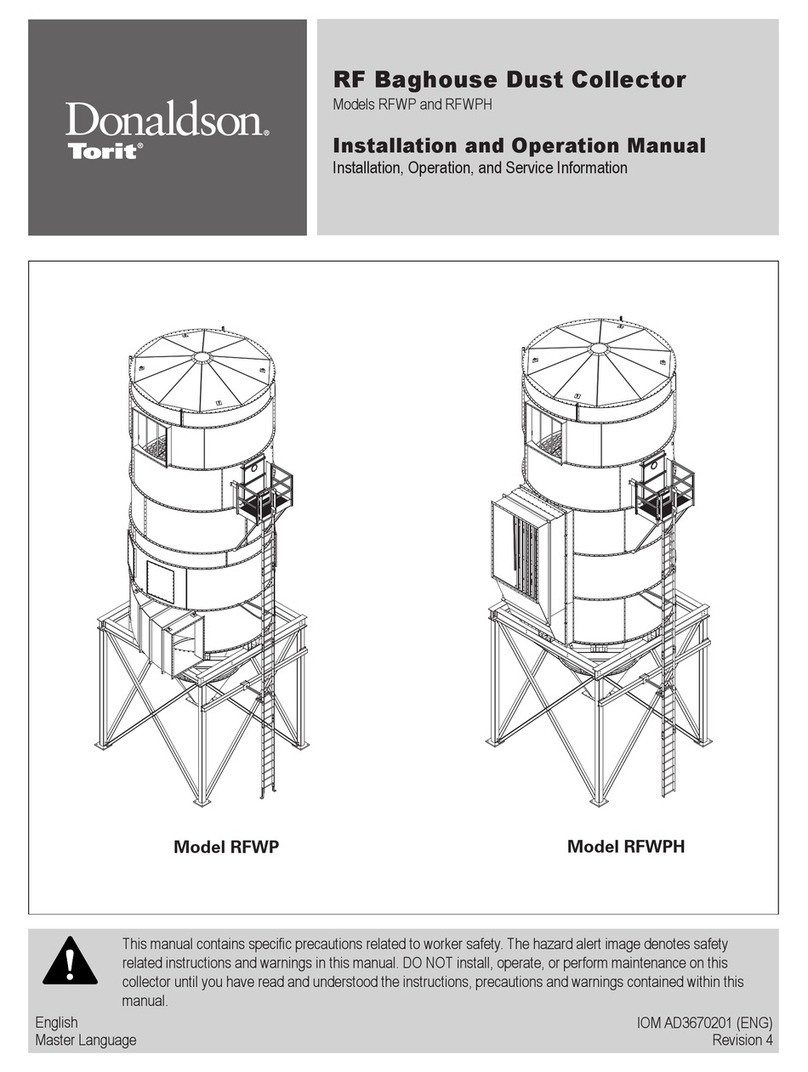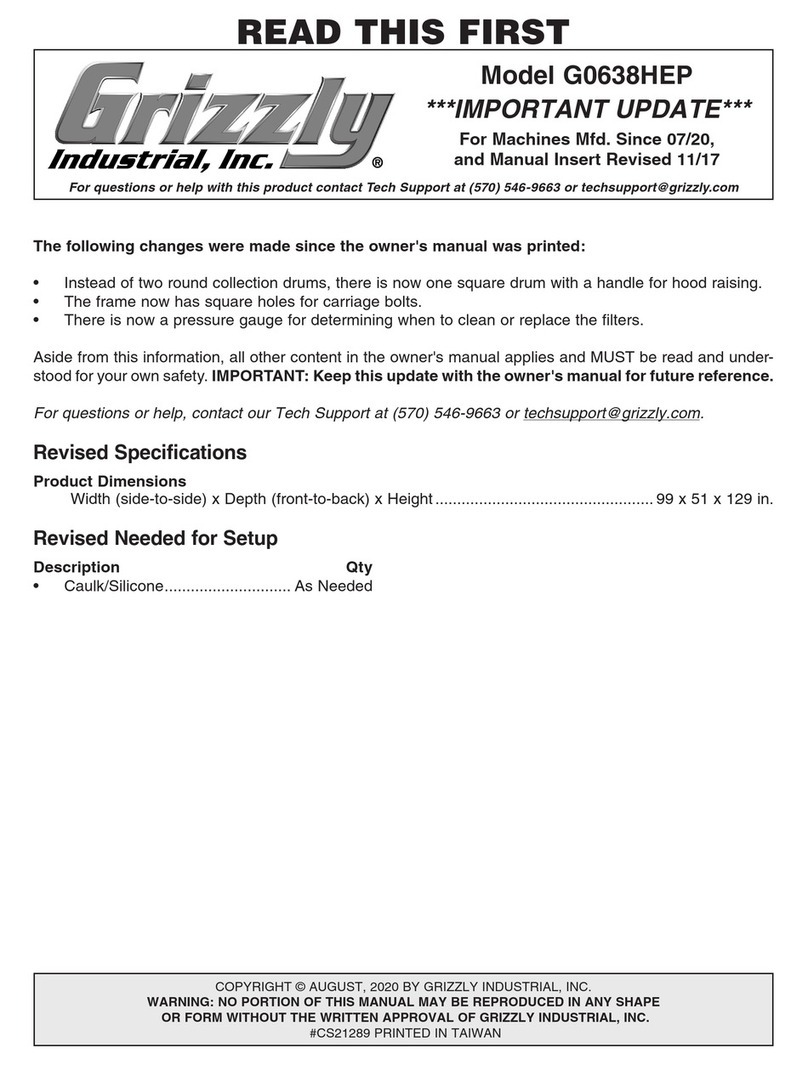Diamatic 3140 DBP User manual

3140 DBP/LPP
C399-US-F-E
10/2015
US
F
E
INSTRUCTIONS MANUAL
MANUEL D’INSTRUCTIONS
MANUAL DE INSTRUCCIONES


www.diamaticusa.com
The choice of professionals
1/12
US
Table of contents
Instructions for use.........................................................................................................2
Operator’s safety............................................................................................................................. 2
General information for using the vacuum cleaner.......................................................................... 2
Proper uses ..................................................................................................................................... 2
Improper Use................................................................................................................................... 3
Dust emissions in the environment ................................................................................................. 3
General recommendations .............................................................................................................. 3
Vacuum cleaner description...........................................................................................4
Labels.............................................................................................................................................. 4
Optional kits..................................................................................................................................... 4
Accessories ..................................................................................................................................... 4
Packing and unpacking ................................................................................................................... 4
Unpacking, moving, use and storage .............................................................................................. 4
Setting to work - connection to the power supply............................................................................ 5
Extensions....................................................................................................................................... 5
Dry applications............................................................................................................................... 5
Maintenance and repairs................................................................................................................. 5
Technical specications................................................................................................................... 6
Dimensions...................................................................................................................................... 7
Controls, indicators and connections .............................................................................................. 7
Inspections prior to starting ............................................................................................................. 7
Starting up ....................................................................................................................................... 7
Emergency stopping........................................................................................................................ 8
Emptying the dust container............................................................................................................ 8
Operation of the ltering cartridges ................................................................................................. 8
Tilting discharge device replacement and use (3140 LPP) ............................................................. 8
Single plastic bag replacement and use.......................................................................................... 8
Maintenance, cleaning and decontamination .................................................................................. 9
Filter disassembly and replacement................................................................................................ 9
Filter cartridge replacement............................................................................................................. 9
HEPA lter replacement .................................................................................................................. 9
Motor cooling fan inspection and cleaning .................................................................................... 10
Tightness inspection...................................................................................................................... 10
Wiring diagrams ............................................................................................................................ 10
Recommended spare parts ............................................................................................................11
Troubleshooting ............................................................................................................12
Original instructions

www.diamaticusa.com
The choice of professionals
US
2/12
Instructions for use
Read the operating instructions and comply with the important safety
recommendations identied by the word WARNING!
Operator’s safety
WARNING!
Before starting the device, it is absolutely
essential to read these operating
instructions and to keep them ready at
hand for consultation.
The vacuum cleaner can only be used by people
who are familiar with the way it works and who
have been explicitly authorised and trained for the
purpose.
Before using the device, the operators must be
informed, instructed and trained on how to work
it and for which substances its usage is permitted
including the safe method for removing and
disposing of the vacuumed material.
WARNING!
The use of device by people (including children)
with limited physical and mental capacities or
lacking in experience and knowledge is strictly
forbidden, unless they are supervised by a person
who is experienced in the use and safe handling of
the device.
Children must be supervised to make sure they will
not play with the device.
General information for using the
vacuum cleaner
Use the vacuum cleaner in accordance with the laws in force
in the country where it is used.
Besides the operating instructions and the laws in force
in the country where the device is used, the technical
regulations for ensuring safe and correct operation must also
be observed.
Do not perform any operation that could jeopardize the
safety of people, property and the environment.
Comply with the safety indications and prescriptions in this
instruction manual.
Proper uses
This vacuum cleaner is suitable for commercial use, in
hotels, schools, hospitals, factories, shops, ofces and
apartment hotels for example, for hire and in any case for
purposes other than normal domestic use.
This vacuum cleaner was conceived to clean and collect solid
and liquid non-ammable materials indoor and outdoor.
WARNING – This vacuum cleaner can only be used to
vacuum dry materials.
■Always leave enough room around the device to reach
the controls easily.
The device has been designed to be used by one operator at
a time.
This vacuum cleaner consists of an automated vacuum unit,
with a lter upstream and a container for collecting the
vacuumed material.

www.diamaticusa.com
The choice of professionals
3/12
US
Improper Use
WARNING!
The following use of the device is strictly forbidden:
■Outdoors in case of atmospheric precipitation.
■When not placed on horizontal levelled
grounds.
■When the ltering unit is not installed.
■When the vacuum inlet and/or hose are turned
to parts of the human body.
■When the dust bag is not installed.
■Use without the guards, protective covers and
safety systems installed by the manufacturer.
■When the cooling vents are partially or totally
clogged.
■When the vacuum cleaner is covered with
plastic or fabric sheets.
■When the air outlet is partially or totally closed.
■When used in narrow areas where there is no
fresh air.
■Vacuuming the following materials:
1. Burning materials (embers, hot ashes, lit
cigarettes, etc.).
2. Naked ames.
3. Combustible gas.
4. Flammable liquids, aggressive fuels
(gasoline, solvents, acids, alkaline solutions,
etc.).
5. Explosive dust/substances and/or ones
liable to ignite in a spontaneous way (such as
magnesium or aluminium dusts, etc.).
IMPORTANT: Fraudulent use is not admitted.
Dust emissions in the environment
Indicative values of performance:
■normal version (not suitable for vacuuming hazardous
dust): retains at least 99% of particles measuring ≥ 3
μm.
General recommendations
WARNING!
If an emergency situation occurs:
■lter breakage
■re outbreak
■short-circuit
■motor block
■electric shock
■etc.
Turn the vacuum cleaner off, unplug it and request
assistance from qualied personnel.
WARNING!
The vacuum cleaners must not be used or stored
outdoors in damp places.
These devices cannot be used in corrosive environment.

www.diamaticusa.com
The choice of professionals
US
4/12
Vacuum cleaner description
Labels
Figure 1
1. Identication plate
Code of the model which includes technical
specications, serial number, EC marking, year of
manufacture
2. Suction connecting hose
3. Control panel
4. Vacuuming unit
5. Dust container
6. Filtering chamber
7. Outlet
8. Container release handle
9. Panel power plate
Indicates that the panel is powered by the voltage
indicated on the data plate.
10. Inlet
11. On/off switch
12. Band latch
13. Filter cartridge cleaning compressor
14. Hot surface warning plates
They warn against the danger of being burnt because of
the high temperature reached by the indicated surfaces.
15. Powered electrical equipment warning plate
It signals the presence of powered electrical equipment.
This vacuum cleaner creates a strong air ow which is drawn
in through the inlet (10) and blows out through the outlet
(7). After the hose and tools have been tted, make sure
that the motor turns correctly.
Before turning the vacuum cleaner on, t the suction hose
into the inlet and then t the required tool on to the end
part. Refer to the manufacturer’s accessory catalogue or
Service Centre in order to choose the accessory to be used.
This vacuum cleaner is equipped with an internal bafe
plate which subjects the vacuumed substances to a circular
centrifugal movement that makes them drop into the
container. The vacuum cleaner is equipped with lters which
enable it to be used for the majority of applications.
Optional kits
Please contact the manufacturer’s sales network for
information on optionals.
Instructions for installing the optional are included in the
conversion kit.
WARNING!
Use only supplied and authorised genuine spare
parts.
Accessories
Various accessories are available; refer to the manufacturer’s
accessory catalogue.
WARNING!
Use only genuine accessories supplied and
authorised by the manufacturer.
Packing and unpacking
Dispose of the packing materials in compliance with the laws
in force.
Figure 2
Model A
(mm) B
(mm) C
(mm) Kg
BDC3140 DBP
230V/60Hz
440V/60Hz 1700 1350 700 229
BDC3140 LPP
230V/60Hz
440V/60Hz 1700 1350 700 233
Unpacking, moving, use and storage
Operate on at, horizontal surfaces.
The load-bearing capacity of the surface the vacuum cleaner
is placed on must be suitable for bearing its weight).

www.diamaticusa.com
The choice of professionals
5/12
US
Setting to work - connection to the
power supply
WARNING!
■Make sure there is no evident sign of damage
to the vacuum cleaner before starting work.
■Before plugging the vacuum cleaner into the
electrical mains, make sure the voltage rating
indicated on the data plate corresponds to that
of the electrical mains.
■Plug the vacuum cleaner into a socket with a
correctly installed ground contact/connection.
Make sure that the vacuum cleaner is turned
off.
■The plugs and connectors of the connection
cables must be protected against splashes of
water.
■Check that for proper connection to the
electrical mains.
■Use the vacuum cleaners only when the cables
that connect to the electrical mains are in
perfect condition (damaged cables could lead
to electric shocks!).
■Regularly check there are no signs of damage,
excessive wear, cracks or ageing on the electric
cable.
WARNING!
When the vacuum cleaner is operating, do not:
■Crush, pull, damage or tread on the cable that
connects to the electrical mains.
■Only disconnect the cable from the electrical
mains by removing the plug (do not pull the
cable).
■Only replace the electric power cable with
one of the same type as the original: SOOW
(230V/60Hz - 440V/60Hz), the same rule
applies if an extension is used.
■The cable must be replaced by the
manufacturer’s Service Centre staff or by
equivalent qualied personnel.
Extensions
If an extension cable is used, make sure it is suitable for the
power input and protection degree of the vacuum cleaner.
Minimum section of extension cables:
Maximum length = 20 m
Cable = SOOW (230V/60Hz-440V/60Hz)
Max power (kW) 7
Minimum section (AWG) 8
WARNING!
Sockets, plugs, connectors and installation of the
extension cable must maintain the IP protection
degree of the vacuum cleaner, as indicated on the
data plate.
WARNING!
The vacuum cleaner’s power socket must be
protected by a differential circuit-breaker with
surge current limitation, that shuts off the power
supply when the current discharged to the
ground exceeds 30 mA for 30 ms or an equivalent
protection circuit.
WARNING!
Never spray water on the vacuum cleaner: this
could be dangerous for persons exposed and could
short circuit the power supply.
Dry applications
[ NOTE ]
The supplied lters and the bag (if applicable) must be
installed correctly.
WARNING!
Comply with the safety regulations governing the
materials for which the vacuum cleaner is used.
Maintenance and repairs
WARNING!
Disconnect the vacuum cleaner from its power
source before cleaning, servicing or replacing parts;
the plug must be removed from the socket.
■Carry out only the maintenance operations
described in this manual.
■Use only original spare parts.
■Do not modify the vacuum cleaner in any way.
Failure to comply with these instructions could
jeopardize your safety.

www.diamaticusa.com
The choice of professionals
US
6/12
Technical specications
Parameter Units 3140 DBP/LPP
Voltage / frequency V/Hz 230/60 440/60** 230/60
440/60**
Power rating*** kW 6,85 6,85 5,15
Noise level dB(A) 80 80 72
Peak noise* dB(A) 81 81 75
Protection IP 55 55 55
Insulation Class F F f
Container capacity L 100 100 100
Inlet (diameter) mm 70 70 70
Max vacuum hPa - mbar 206 - 206 206 - 206 226-226
Maximum air ow rate (with hose, length: 3 m, diameter: 76 mm) m3/h - L/min’ 550 - 9250 550 - 9250 462-7700
Main lter surface m215 15 15
Upstream absolute “H” lter surface - HEPA 14 according to
MPPS method (EN 1822) m23,5 3,5 3,5
* When the compressor is operating
** 400-480V/60 Hz
*** Suction unit + compressor
Parameter Units 3140 DBP/LPP
Voltage / frequency V/Hz 230/60 440/60** 230/60
440/60**
Power rating*** kW 6,85 6,85 5,15
Noise level @ 3’3” (1 meter) dB(A) 80 80 72
Peak noise* dB(A) 81 81 75
Protection IP 55 55 55
Motor insulation Class F F F
Container capacity Gallons/litres 26 - 100 26 - 100 26-100
Inlet (diameter) Inches 3 3 3
Max vacuum Inches H2O 8.21 8.21 9.06
Max air ow rate cfm 327 327 272
Main lter surface Sq. ft 162 162 162
Absolute lter surface (HEPA optional) Sq. ft 38 38 38
Cable length ft 30 30 30
HEPA lter efciency MPPS tested 99.995% @
0.18 micron
99.995% @
0.18 micron
99.995% @
0.18 micron
* When the compressor is operating
** 400-480V/60 Hz
*** Suction unit + compressor

www.diamaticusa.com
The choice of professionals
7/12
US
Dimensions
Figure 3
Model 3140 DBP
230/60 440/60
A (mm) 1600
B (mm) 1200
C (mm) 600
Weight (kg) 212 212
Model 3140 LPP
230/60 440/60
A (mm) 1600
B (mm) 1200
C (mm) 600
Weight (kg) 216 216
[ NOTE ]
■Storage conditions:
Temperature: -10°C ÷ +40°C
Humidity: ≤ 85%
■Operating conditions:
Maximum altitude: 800 m
(Up to 2,000 m with reduced performances)
Temperature: -10°C ÷ +40°C
Humidity: ≤ 85%
Controls, indicators and connections
Figure 4
1. Dust container release lever
2. Castor lever
3. Main switch
4. Start button
5. Stop button
6. Voltage presence white indicator
7. Thermal protection operation red indicator
8. Pressure governor
Inspections prior to starting
Figure 5
1. Inlet
Prior to starting, check that:
■The lter is installed.
■All latches are tightly locked;
■The vacuum hose and tools have been correctly tted
into the inlet (1);
■The bag or safety container is installed, if applicable.
Do not use the device if the lter is faulty.
Starting up
Figure 6
1. Castor brakes
Lock the castor brakes before starting the vacuum cleaner (1).
Starting/stopping the vacuum cleaner
■Turn the switch (3) (gure 4) to “I” position to
electrically power the vacuum cleaner. The voltage
presence indicator (6) (gure 4) comes on.
■Push the start button (4) (gure 4) to start the vacuum
cleaner.
■Push the stop button (5) (gure 4) to stop the vacuum
cleaner.
■Turn the switch (3) (gure 4) to “0” position to turn off
the electrical power of the vacuum cleaner.
WARNING!
Check the pressure of the air used to clean the
lters which is produced by the compressor.
It must never be superior than 5.5 bars, if
necessary, adjust it to the correct level using the
related pressure governors (9 e 11) (gure 4).
WARNING!
The activation of the indicator (7) (gure 4) signals
the operation of the vacuum unit thermal protection
due to the excessive electrical power draw of the
unit.

www.diamaticusa.com
The choice of professionals
US
8/12
Emergency stopping
Turn the main switch (3) (gure 4) to “0” position.
Emptying the dust container
WARNING!
WARNING! To lift the container and empty it, when
using a forklift truck, use 4056000394 kit if the
total weight of the container and collected material
is not greater than 80 kg. For greater weights, use
Z5 36073 or Z5 36074 kit.
WARNING!
Before proceeding with these operations, turn off
the vacuum cleaner and remove the plug from the
power socket.
Figure 7
1. Dust container
2. Dust container release lever
Normal version
■Release the dust container (1) using the lever (2), then
remove and empty it.
■Make sure the seal is in perfect condition and correctly
positioned.
■Place the container back in position and secure it again.
Operation of the ltering cartridges
Figure 9
1. Electropneumatic device
2. Filter cartridges
3. Timer
The ltering cartridges (2) serve the purpose of ltering
the intake air. The vacuum cleaner is equipped with a fully
automatic electropneumatic device (1) to alternately clean
the ltering cartridges (2), which guarantees continuous
service.
Powered with a 24V rating, is complete with cyclic timer (3)
to regulate the following times:
T3= time between one cleaning cycle and the next, set on 0
seconds;
T2= time between one cleaning operation of the cartridge
(2) and the next, set on 20 seconds;
T1= opening time of the solenoid valve for backwashed
air exhaust into the cartridge, set at 2÷3 tenths of a
second. The shorter the time, the more energetic the
cleaning action will be.
Check the arrows on the knobs of the timer (3) for the
exact regulation.
Factory setting should not be changed if without
consulting Diamatic.
The three solenoid valves of the electropneumatic device
control the cleaning of the relative lter cartridges.
Figure 16
1. Filter cleaning solenoid valve E1
2. Filter cleaning solenoid valve E2
3. Filter cleaning solenoid valve E3
Tilting discharge device replacement
and use (3140 LPP)
Figure 8A
1. Tilting discharge device assembly
■Fasten the hopper to the ltering chamber, by inserting
it into the relevant housings and, operating on the lever
(2) to lock it.
■Insert the bag (Longopac®) into the relevant support
and fasten its end with the belt (1).
■Engage the tilting discharge device support to the
hopper by fastening it with the relevant pins.
■Remove the bag (Longopac®) until it lays on the lower
support platform and close its end with the supplied
clamp.
■When the bag is full (Longopac®) close the upper end
with two clamps by fastening them at 50 mm one
from the other, then with a pair of scissors cut the bag
between the two clamps (3).
Single plastic bag replacement and
use
Figure 8B
Place the plastic bag outside the tilting discharge device
support, taking care that the bag bottom lays on the lower
support platform and lock the upper part of the bag with the
belt.

www.diamaticusa.com
The choice of professionals
9/12
US
Maintenance, cleaning and
decontamination
WARNING!
The precautions described below must be taken
during all the maintenance operations, including
cleaning and replacing of the lter.
■To allow the user to carry out the maintenance
operations, the vacuum cleaner must be
disassembled, cleaned and overhauled as far as
is reasonably possible, without causing hazards
for the maintenance staff or other people. The
suitable precautions include decontamination
before disassembling the device, adequate
ltered ventilation of the exhaust air from the
room in which it is disassembled, cleaning of
the maintenance area and suitable personal
protection.
Compartments that are not dust-tight must
be opened with suitable tools (screwdrivers,
wrenches, etc.) and thoroughly cleaned.
■Carry out a technical inspection at least once
a year, e.g.: check the air lter to nd out
whether the air-tightness of the vacuum
cleaner has been impaired in any way and
make sure that the electric control panel
operates correctly. This inspection must
be carried out by the manufacturer or by a
competent person.
Filter disassembly and replacement
WARNING!
When the vacuum cleaner is used to vacuum
hazardous substances, the lters become
contaminated, therefore:
■Work with care and avoid spilling the
vacuumed dust and/or material.
■Place the disassembled and/or replaced lters
in a sealed plastic bag.
■Close it hermetically.
■Dispose of the lters in accordance with the
laws in force.
WARNING!
Filter replacement is a serious matter. The lters
must be replaced with ones of identical ltering
surface characteristics.
Otherwise the vacuum cleaner will not operate
correctly.
Filter cartridge replacement
Figure 10
1. Vacuum hose
2. Fixing clamp
3. Compressed air hose
4. Electric cable
5. Electric connector
6. Release lever
7. Cover
8. Filter cartridge support
9. Filter cartridge
10. Filter cartridge xing nut
11. Side cover
Before proceeding with these operations, turn off the vacuum
cleaner and remove the plug from the power socket.
■Disassemble the vacuum hose (1) and tighten the
clamp (2).
■Disconnect the compressed air hose (3) by releasing its
quick-t coupling.
■Disconnect the electric cable (4) by releasing the
connector (5).
■Use the lever (6) to remove the cover (7) and the side
cover (11).
■Disassemble the support (8) with the lter cartridges.
■Remove the lters cartridge (9) by unscrewing the
xing nuts (10).
■Assemble the new lter cartridges and proceed in the
reverse order of removal to install all the components,
making sure that the previously disconnected electrical
and pneumatic connections have been reconnected.
When reassembling, turn the cover until the
electropneumatic device is in the right position for the
cartridge support.
■Dispose of the old lter cartridges according to the laws
in force.

www.diamaticusa.com
The choice of professionals
US
10/12
HEPA lter replacement
WARNING!
Take care not to raise dust when this operation is
carried out. Wear a P3 mask and other protective
clothing plus protective gloves (DPI) suited to the
hazardous nature of the dust collected, refer to the
laws in force.
WARNING!
Do not use the absolute lter again after having
removed it from the vacuum cleaner.
Figure 11
1. Vacuum cap
2. Locking lever
3. Safety bolt
4. Absolute lter lock ring
5. Absolute lter disc
6. Absolute lter
Before proceeding with these operations, turn the vacuum
cleaner off and disconnect the plug from the power socket.
■Unlock the safety bolt (3).
■Use the lever (2) to release the cap (1) then pull it up
and out of the vacuum cleaner.
■Unscrew ring (4).
■Pull out disc (5) and absolute lter (6).
■Place absolute lter (6) in a plastic bag, close the bag
hermetically and dispose of the lter in accordance with
the laws in force.
■Insert a new lter (6) with the same ltering
characteristics as the removed one.
■Lock the absolute lter with disc (5) and tighten ring
(4).
■Insert the cap (1) again.
■Fix the cap in place with the lever (2) and lock the
safety bolt (3) again.
Motor cooling fan inspection and
cleaning
Periodically clean the motor cooling fan to prevent the motor
from overheating, especially if the vacuum cleaner is used in
a dusty place.
Tightness inspection
Figure 12
1. Suction connecting hose
2. Hose
■Hoses check
Make sure that the suction connecting hose (1) is in a
good condition and correctly xed.
If the hose is damaged, broken or badly connected to
the unions, it must be replaced.
When sticky materials are treated, check for possible
clogging along the hose (2), in the inlet and on the
bafe plate inside the ltering chamber.
Scrape the inlet from the outside and remove the
deposited waste as indicated in the gure.
Figure 13
1. Seal
2. Screws
3. Filtering chamber
■Filtering chamber tightness check
If the gasket (1) between the container and the ltering
chamber (3) fails to guarantee tightness:
▪Loosen the four screws (2) that lock the ltering
chamber (3) against the vacuum cleaner structure.
▪Allow the ltering chamber (3) to lower down and
tighten the screws (2) once it has reached the
tightness position.
The gasket (1) must be replaced if it is torn, cut, etc.
Wiring diagrams
Figure 15
Item Part
Q1 Main switch
Q2 Circuit breaker
Q3 Circuit breaker
KM1 Contactor
TS2 Cyclic timer
TR1 Transformer

www.diamaticusa.com
The choice of professionals
11/12
US
Recommended spare parts
The following is a list of spare parts that should be kept ready at hand in order to speed up maintenance operations.
Refer to the manufacturer’s spare parts catalogue when ordering spare parts.
Description Code
+
Primary cartridge lter 490803-1
Filter ring seal Z8 17026
Filter chamber gasket 40000762
Absolute lter 4081700936

www.diamaticusa.com
The choice of professionals
US
12/12
Troubleshooting
Problem Cause Remedy
The vacuum cleaner does not start Lack of power supply Check for power at the socket.
Check the condition of the socket and
the cable.
If necessary, ask for assistance to
be performed by a manufacturer’s
technician.
The vacuum cleaner does not vacuum
correctly
Clogged lters Check the lter cleaning operation or
replace the lters.
Check the compressor functionality
(see the relative manual).
Make sure that the compressed air
nozzles are aligned with the cartridges.
Clogged vacuum hose Check the vacuum hose and clean it.
The vacuum cleaner suddenly stops Circuit breaker activation Check the circuit breaker adjustment.
Check the motor electrical input.
Empty the container.
If necessary, ask for assistance to
be performed by a manufacturer’s
technician.
Dust leaks from the vacuum cleaner Filters are broken Replace them with others of identical
type.
Inadequate lter Replace it with another of a suitable
category and check.
Electrostatic current on the vacuum
cleaner
Non existent or inefcient grounding Check all ground connections. In
particular on the vacuum inlet tting;
replace the hose with an antistatic
hose.

www.diamaticusa.com
The choice of professionals
1/12
F
Index
Mode d’emploi .................................................................................................................2
Sécurité de l’opérateur .................................................................................................................... 2
Informations générales sur l’utilisation de l’aspirateur..................................................................... 2
Utilisations prévues ......................................................................................................................... 2
Utilisations inappropriées ................................................................................................................ 3
Emissions de poussières dans l’atmosphère .................................................................................. 3
Recommandations générales.......................................................................................................... 3
Description de l’aspirateur .............................................................................................4
Plaques ........................................................................................................................................... 4
Options de transformation ............................................................................................................... 4
Accessoires ..................................................................................................................................... 4
Emballage et déballage................................................................................................................... 4
Déballage, manutention, emploi et stockage .................................................................................. 4
Mise en service - raccordement au réseau d’alimentation électrique ............................................. 5
Rallonges ........................................................................................................................................ 5
Aspiration de substances sèches.................................................................................................... 5
Entretien et réparation..................................................................................................................... 5
Données techniques........................................................................................................................ 6
Dimensions...................................................................................................................................... 7
Commandes, indicateurs et connexions ......................................................................................... 7
Contrôles avant la mise en marche................................................................................................. 7
Mise en marche............................................................................................................................... 7
Arrêt d’urgence................................................................................................................................ 8
Vidange de la cuve à poussières .................................................................................................... 8
Fonctionnement des cartouches ltrantes....................................................................................... 8
Remplacement et utilisation du système de vidange basculant (3140 LPP).................................. 8
Remplacement et utilisation sac en plastique ................................................................................. 8
Entretien, nettoyage et décontamination......................................................................................... 9
Démontage et remplacement des ltres.......................................................................................... 9
Remplacement des cartouches des ltres ...................................................................................... 9
Remplacement du ltre absolu........................................................................................................ 9
Contrôle et nettoyage du ventilateur de refroidissement du moteur.............................................. 10
Contrôle des étanchéités............................................................................................................... 10
Pièces détachées conseillées ........................................................................................................11
Recherche des pannes .................................................................................................12
Traduction des instructions originales

www.diamaticusa.com
The choice of professionals
F
2/12
Mode d’emploi
Lire les instructions du mode d’emploi et observer les avertissements importants de
sécurité repérés par ATTENTION !
Sécurité de l’opérateur
ATTENTION !
Avant de mettre l’appareil en service,
lire absolument le mode d’emploi et le
tenir à portée de la main pour pouvoir le
consulter en cas de besoin.
L’utilisation de l’aspirateur est réservée
exclusivement au personnel expérimenté, formé et
expressément chargé du fonctionnement.
Avant l’utilisation, les opérateurs doivent être
instruits et formés à l’utilisation de l’appareil
et des substances pour lesquelles il doit être
utilisé, y compris la méthode sûre d’évacuation et
d’élimination de la matière recueillie.
ATTENTION !
Cet appareil ne doit pas être utilisé par des
personnes (y compris des enfants) présentant des
troubles psychiques, sensoriels ou mentaux ou
ayant un degré d’instruction et de connaissance
insufsant, à moins qu’ils soient toujours
surveillées par des personnes compétentes ou qu’ils
aient reçu d’elles les instructions d’utilisation de
l’appareil.
Les enfants doivent être surveillés an qu’ils ne
jouent pas avec l’appareil.
Informations générales sur
l’utilisation de l’aspirateur
L’utilisation de l’aspirateur est soumise aux normes
internationales en vigueur.
En plus des instructions du mode d’emploi et des règlements
en vigueur dans le Pays où il est utilisé, pour la prévention
des accidents il est nécessaire d’observer les règles
techniques pour un travail sûr et correct.
Eviter tout travail pouvant porter atteinte à la sécurité des
personnes, des choses et de l’environnement.
Observer les informations et les prescriptions de sécurité
contenues dans ce manuel d’instructions.
Utilisations prévues
Cet appareil convient pour l’emploi commercial, par exemple
dans des hôtels, des écoles, des hôpitaux, des usines, des
magasins, des bureaux, des résidences, pour l’emploi en
location et de toute manière pour des emplois différents du
simple usage domestique.
Cet appareil est adapté exclusivement aux travaux de
nettoyage et de récupération de matière solide et liquide non
inammable dans des endroits internes et externes.
AVERTISSEMENT – Cette machine est adaptée exclusivement
à l’aspiration à sec.
■Prévoir toujours un espace libre autour de l’appareil
pour permettre un accès aisé aux commandes.
La machine a été conçue pour être utilisée par un seul
opérateur.
Cet appareil est formé d’une unité d’aspiration motorisée,
précédée d’une unité ltrante et munie d’une cuve pour la
collecte de la matière aspirée.

www.diamaticusa.com
The choice of professionals
3/12
F
Utilisations inappropriées
ATTENTION !
Sont formellement interdits :
■Utilisation en plein air en cas de précipitations
atmosphériques.
■Utilisation de l’aspirateur sur des surfaces non
planes et non horizontales.
■Utilisation sans l’unité ltrante prévue par le
fabricant.
■Utilisation avec l’embout et/ou le tuyau
d’aspiration tournés vers le corps humain.
■Utilisation sans avoir installé la cuve de
récupération.
■L’utilisation sans les abris, les protections
et les dispositifs de sécurité installés par le
fabricant.
■Utilisation de l’aspirateur en occluant
partiellement ou totalement les prises d’air de
refroidissement des composants à l’intérieur.
■Utilisation de l’aspirateur couvert par des toiles
en plastique ou en tissu.
■Utilisation avec la bouche d’échappement d’air
complètement ou partiellement fermée.
■L’utilisation dans des endroits exigus, qui ne
permettent pas l’échange d’air.
■Aspirer les matières suivantes :
1. matières ardentes (braises, cendres chaudes,
cigarettes allumées, etc.).
2. ammes libres.
3. gaz combustibles.
4. liquides inammables, combustibles agressifs
(essence, solvants, acides, solutions
alcalines, etc.).
5. poussières/substances et/ou mélanges
explosifs et à allumage spontané (poussières
de magnésium ou d’aluminium, etc.).
Remarque : Tout ce qui a été mentionné ci-dessus
n’inclut pas l’utilisation dolosive et cette dernière
est absolument interdite.
Emissions de poussières dans
l’atmosphère
Valeurs indicatives des performances :
■version normale (non adaptée à l’aspiration de
poussières dangereuses) : retient au moins 99% de
particules de dimension ≥ de 3 μm.
Recommandations générales
ATTENTION !
En cas d’émergence :
■rupture du ltre
■incendie
■court-circuit
■blocage du moteur
■choc électrique
■etc.
Arrêter l’aspirateur, débrancher la che et
demander l’intervention de personnel spécialisé.
ATTENTION !
Les aspirateurs ne doivent pas être utilisés
ou emmagasinés en plein air ou en présence
d’humidité.
Ne pas utiliser ces appareils dans des milieux corrosifs.

www.diamaticusa.com
The choice of professionals
F
4/12
Description de l’aspirateur
Plaques
Figure 1
1. Plaque d’identication
Code Modèle incluant Caractéristiques techniques,
Matricule, Marquage CE, Année de fabrication
2. Tuyau de raccordement aspiration
3. Panneau de commande
4. Unité d’aspiration
5. Cuve de récupération poussière
6. Chambre ltrante
7. Vidange
8. Poignée de décrochage cuve
9. Plaque du tableau sous tension
Signale la mise sous tension indiquée sur la plaque à
l’intérieur du tableau.
10. Bouche d’aspiration
11. Sélecteur d’activation et d’arrêt
12. Fermeture par bande
13. Compresseur pour nettoyage cartouches ltre
(440V/60Hz - 230V/60Hz)
14. Plaques de danger surfaces chaudes
Elles signalent le risque de brûlures à cause de la
température élevée des surfaces indiquées.
15. Plaque de danger composants électriques sous tension
Elle signale la présence de composants électriques sous
tension.
Cet aspirateur produit un ux d’air important qui est aspiré
par la bouche d’aspiration (10) et sort par le rejet (7) ;
après avoir positionné le tuyau et les accessoires, vérier la
rotation correcte du moteur.
Avant de mettre l’aspirateur en marche, brancher le tuyau
d’aspiration dans la bouche et monter l’accessoire adapté au
travail à effectuer sur l’extrémité du tuyau ; pour le choix de
l’accessoire à utiliser, consulter le catalogue des accessoires
ou contacter le Service Après-Vente du fabricant.
Cet aspirateur est équipé d’un déecteur interne qui, en
imprimant un mouvement circulaire aux substances aspirées,
favorise leur retombée dans la cuve. L’aspirateur est aussi
équipé de ltres qui permettent le fonctionnement de la
plupart des applications.
Options de transformation
Pour les options de transformation, veuillez contacter le
réseau commercial du fabricant.
Les instructions pour l’installation des parties en option sont
contenues dans les kits de transformation.
ATTENTION !
Utiliser uniquement des options d’origine fournies
et autorisées.
Accessoires
Plusieurs accessoires sont disponibles ; veuillez consulter le
catalogue des accessoires du constructeur.
ATTENTION !
Utiliser uniquement des accessoires d’origine
fournis et autorisés par le constructeur.
Emballage et déballage
Eliminer les matériaux de l’emballage conformément à la
législation en vigueur.
Figure 2
Modèle A
(mm) B
(mm) C
(mm) Kg
BDC3140 DBP
230V/60Hz
440V/60Hz 1700 1350 700 229
BDC3140 LPP
230V/60Hz
440V/60Hz 1700 1350 700 233
Déballage, manutention, emploi et
stockage
Travailler sur des surfaces plates et horizontales.
(La portée du plan d’appui doit être adaptée au poids de
l’aspirateur).

www.diamaticusa.com
The choice of professionals
5/12
F
Mise en service - raccordement au
réseau d’alimentation électrique
ATTENTION !
■Avant la mise en service, s’assurer que
l’aspirateur n’ait subi aucun dégât apparent.
■Avant de brancher l’aspirateur au réseau,
s’assurer que la tension indiquée sur la plaque
corresponde à celle du réseau.
■Brancher la che du câble de connexion
dans une prise avec contact / connexion de
terre installé correctement. S’assurer que
l’aspirateur est éteint.
■Les ches et les connecteurs des câbles de
raccordement au réseau doivent être protégés
des projections d’eau.
■Contrôler si le branchement au réseau
électrique est correct.
■Utiliser seulement des aspirateurs dont les
câbles de raccordement au réseau électrique
sont en parfait état (si le câble est endommagé,
il y a risque d’électrocution !).
■Vérier régulièrement l’absence de
dommages et de signes d’usure, déchirures
ou vieillissement du câble de branchement au
réseau.
ATTENTION !
Pendant le fonctionnement éviter de :
■Piétiner, écraser, tirer ou endommager le câble
de connexion au réseau électrique.
■Débrancher le câble simplement en retirant la
che (ne pas tirer sur le câble électrique).
■En cas de remplacement du câble
d’alimentation électrique, le remplacer par un
câble d’origine du même type :
SOOW (230V/60Hz - 440V/60Hz), la même
règle est valable si l’on utilise une rallonge.
■Le câble d’alimentation doit être remplacé par
le Service Après-Vente du constructeur ou par
du personnel qualié équivalent.
Rallonges
Si l’on utilise une rallonge, faire attention à la section qui doit
être adaptée au courant absorbé et au degré de protection
de l’aspirateur.
Section minimum des câbles de la rallonge :
Longueur maximum = 20 m
Câble = SOOW (230V/60Hz - 440V/60Hz)
Puissance maximum (kW) 7
Section minimum (AWG) 8
ATTENTION !
Les prises, les ches, les connecteurs et la pose du
câble de la rallonge doivent être tels à maintenir
le degré de protection IP indiqué sur la plaque de
l’aspirateur.
ATTENTION !
La prise d’alimentation de l’aspirateur doit être
protégée par un disjoncteur différentiel à limitation
du courant de défaut, qui coupe l’alimentation
quand le courant dispersé vers la terre dépasse
les 30 mA pendant 30 ms, ou par un circuit de
protection équivalent.
ATTENTION !
Ne jamais éclabousser l’aspirateur d’eau : ceci est
dangereux pour les personnes et risque de créer un
court-circuit de l’alimentation.
Aspiration de substances sèches
[ REMARQUE ]
Les ltres fournis et le sac de collecte, s’ils sont prévus,
doivent être mis en place correctement.
ATTENTION !
Respecter les consignes de sécurité relatives aux
matières aspirées.
Entretien et réparation
ATTENTION !
Avant d’effectuer des travaux de nettoyage ou
d’entretien et pendant le remplacement des pièces,
débrancher l’aspirateur de la source d’alimentation
; la che doit être enlevée de la prise.
■Effectuer seulement les travaux d’entretien
décrits dans le présent manuel.
■Utiliser seulement des pièces détachées
d’origine.
■Ne pas apporter de modications à l’aspirateur.
Si ces indications ne sont pas respectées, votre
sécurité peut être compromise.

www.diamaticusa.com
The choice of professionals
F
6/12
Données techniques
Paramètre Unité de
mesure 3140 DBP/LPP
Tension / fréquence V / Hz 230/60 440/60** 230/60
440/60**
Puissance*** kW 6,85 6,85 5,15
Niveau sonore dB(A) 80 80 72
Bruit de pointe* dB(A) 81 81 75
Protection IP 55 55 55
Isolation Classe F F f
Capacité de la cuve L 100 100 100
Bouche d’aspiration (diamètre) mm 70 70 70
Dépression maxi hPa - mbar 206 - 206 206 - 206 226-226
Débit d’air maximum (avec tuyau, longueur : 3 m, diamètre :
76 mm) m3/h - L/min’ 550 - 9250 550 - 9250 462-7700
Surface ltre primaire m215 15 15
Surface ltre absolu « H » à l’aspiration - HEPA 14 selon
la méthode MPPS (EN 1822) m23,5 3,5 3,5
* Avec compresseur en marche
** 400-480V/60 Hz
*** Unité de aspiration + compresseur
Paramètre Unité de
mesure 3140 DBP/LPP
Tension / fréquence V / Hz 230/60 440/60** 230/60
440/60**
Puissance*** kW 6,85 6,85 5,15
Niveau sonore @ 3’3” (1 mètre) dB(A) 80 80 72
Bruit de pointe* dB(A) 81 81 75
Protection IP 55 55 55
Isolation moteur Classe F F F
Capacité de la cuve Gallons /
litres 26 - 100 26 - 100 26-100
Bouche d’aspiration (diamètre) Pouces 3 3 3
Dépression maxi Pouces
H2O8.21 8.21 9.06
Débit d’air maximum cfm 327 327 272
Surface ltre primaire Sq. ft 162 162 162
Surface ltre absolu (HEPA optionnel) Sq. ft 38 38 38
Longueur câble ft 30 30 30
Rendement du ltre HEPA MPPS
vérié 99.995% @ 0.18
micron
99.995% @
0.18 micron
99.995% @
0.18 micron
* Avec compresseur en marche
** 400-480V/60 Hz
*** Unité de aspiration + compresseur
This manual suits for next models
1
Table of contents
Languages:
Popular Dust Collector manuals by other brands
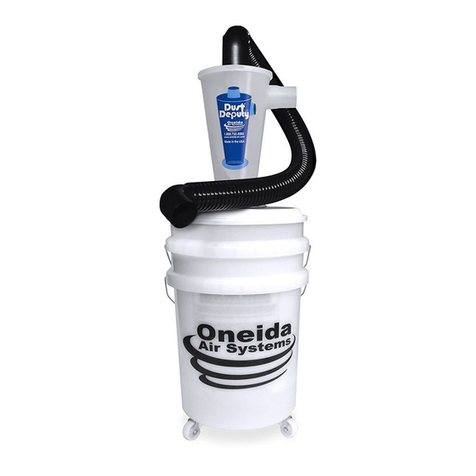
Oneida Air Systems
Oneida Air Systems Dust Deputy AXD000004 owner's manual
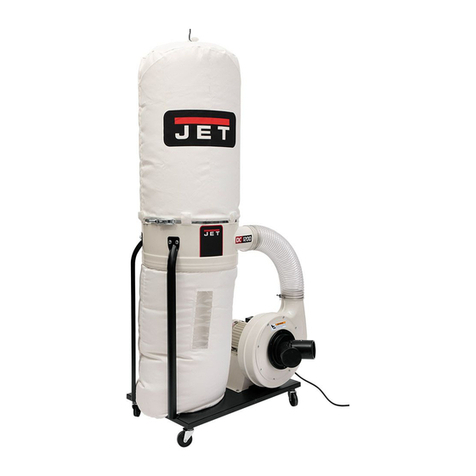
Jet
Jet DC-1200A owner's manual

Rikon Power Tools
Rikon Power Tools POWER TOOLS 60-1750 Operator's manual

Oneida Air Systems
Oneida Air Systems 2 HP Commercial Cyclonic Dust Collector owner's manual

Baileigh Industrial
Baileigh Industrial DC-1300B Operator's manual
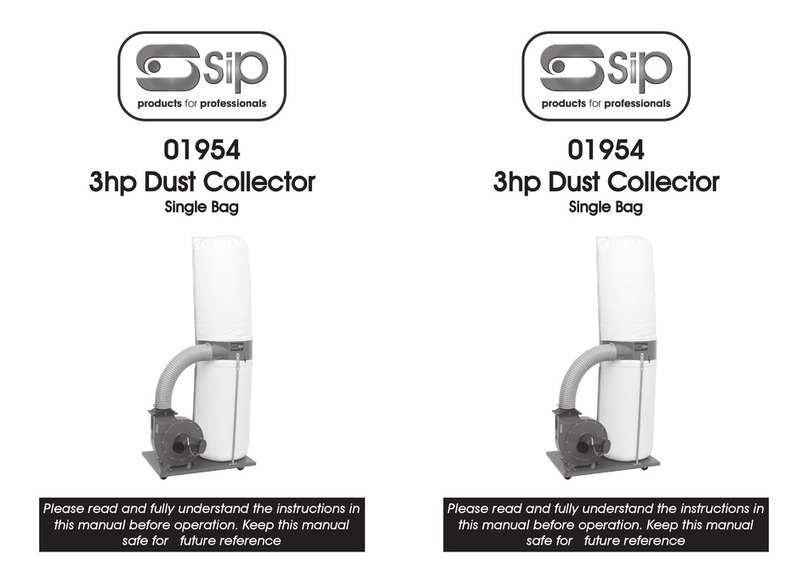
SIP
SIP 01954 instruction manual

